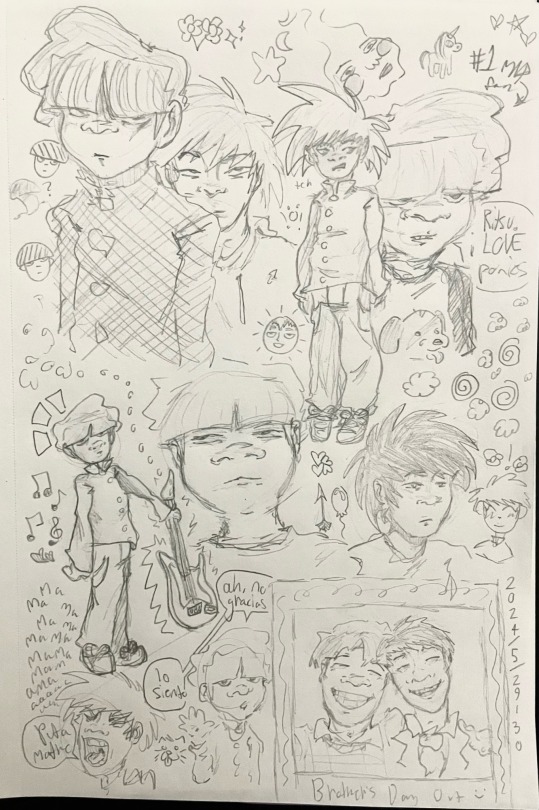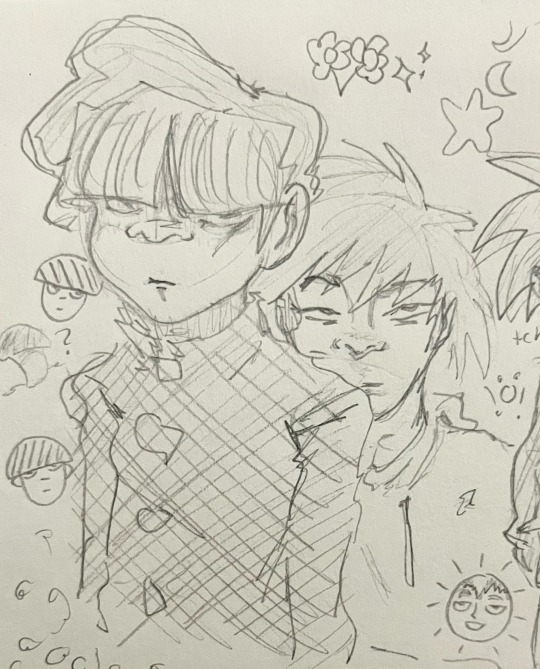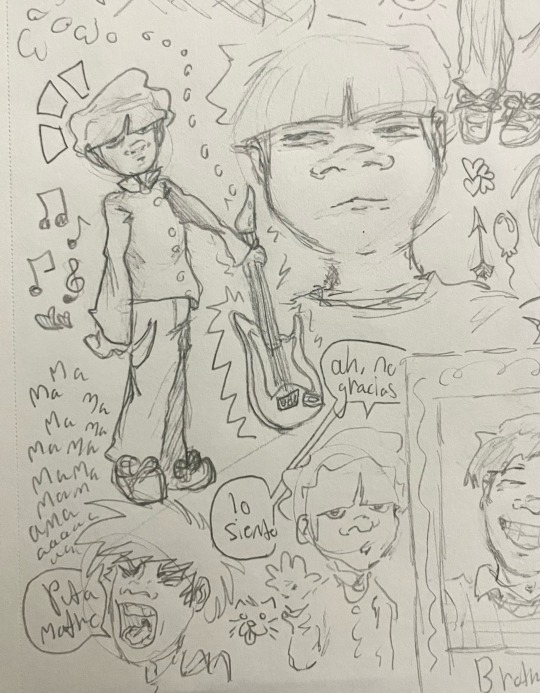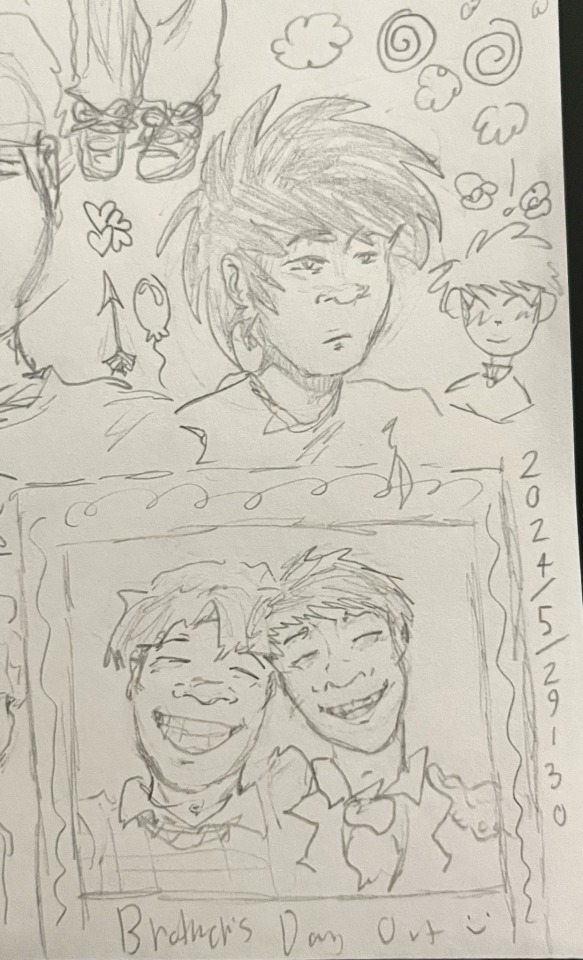#i like the messiness of pencil paper art (says the always messy art-maker)
Explore tagged Tumblr posts
Text

kagebros doodle page
close ups




#theyre adults in the picture btw if you couldnt tell#mob would be beefier — he didnt put in all that work in the body improvement club for nothing#i hadnt meant to make ritsu look slightly taller but im not completely averse to the idea#mob psycho 100#mp100#shigeo kageyama#kageyama shigeo#mob#ritsu kageyama#kageyama ritsu#mob psycho fanart#meowmeow art#dimple and reigen are technically here too but not enough to tag#sometimes i need a refresh from digital art#i like the messiness of pencil paper art (says the always messy art-maker)#i like rubbed out pencil marking and stray lines that come with it
82 notes
·
View notes
Text
My story is not typical of many of the artists who have been featured here. I came to art late in the game. I didn’t draw and doodle much as a child. I didn’t study art in school or college. My path was very different.
I grew up in rural northern Indiana. I love the rural Midwest landscape, especially trees and fields. I went to college in Utah, where I learned to appreciate the desert landscape and mountains. I graduated and came back to Indiana and earned a Ph.D. in linguistics from Indiana University, where I taught for 26 years. During that time, we moved to forty very rural acres in Solsberry, Indiana. We had two children, made a beautiful garden, and I learned to weave and dye.
In due time, I started a side business selling hand-dyed yarn and handwovens. In 2011, I started blogging about our rural life and all the crazy things that happen out here. Those disparate activities taught me a lot of important things. As an academic, I learned to study and ask questions. To be a better dyer, I learned everything I could about color theory and color mixing. To be a better blogger, I learned photography and composition.
One day in 2014 on Facebook, I was tagged in one of those memes where you have to answer 20 questions about yourself and one of the questions was: If I had the time I would _____________. I found myself answering: If I had the time I would study painting. I had recently turned 50 years old and it had always been a secret dream of mine to be a painter.
I thought about that for a long time and then decided that just studying painting was a great way to start. I still study all the time: many different artists, styles and mediums. I study color. I study composition. That Christmas I got myself a little ‘how to watercolor’ book and did a few of the exercises. I let myself paint a lot and didn’t worry if it was bad. I painted the same scenes again and again. I took a few online Craftsy classes in watercolor and got a lot of encouragement. I took a watercolor class offered through the local community college and again got a lot of encouragement. The instructor invited me to join the local watercolor society, which I did.
I kept painting and painting and sharing my work with others. Someone suggested that I submit one of my pieces to the juried member show of the Watercolor Society of Indiana and it was accepted. At that point I got serious about watercolor. I took multi-day workshops with nationally known artists. I painted and painted.
What I like best about watercolor is also what is most challenging about watercolor. It’s unruly. The truth is, a lot of my life is that way. Our forty acres are big and messy and vulnerable to the caprices of nature. I spent years photographing and blogging about our life out here but I could never quite express the feeling of all that sky meeting all those trees meeting all the rest of rural Indiana until I started painting it. I love it when folks look at one of my landscapes and say, ‘Oh, that reminds me of home!’ I try to put as much home as possible in every painting. Things may not be tidy out here, but they sure are interesting. That’s what I paint.
The one thing that has made the biggest difference in my art has been my choice to be confident in my approach. Sometimes this means I paint confident garbage, but mostly it means that I am painting more and more good things. Using professional quality materials is a big confidence booster. I paint on Arches 140lb cold press paper. I use tube paint from Winsor & Newton, Daniel Smith, Mission, M. Graham and Sennelier. A single color can differ from maker to maker. It’s OK to experiment and try several different makers. Right now I really love how M. Graham and Sennelier have such intense colors and easily wetting paint – they are both made with honey and won’t dry on your palette. (As a beekeeper myself, I love that!)
Those are my beehives and I really do paint them bright colors like that!
My process is to gather several reference photos and then start putting together thumbnail sketches of the basic large shapes in my composition. I don’t try to make my painting match any photo. I might do a notan. Then I decide what colors to use. I might do a color harmony swatch or two. Or five. Then I dive right in on a 10 x 14 inch piece of paper and do the first draft.
This first draft is just that: a DRAFT. It’s not going to be perfect. I adjust colors. I take things out. I put things in. I pencil in possible corrections to the composition. I get a lot of feedback. In the end, this draft is usually a mess.
Getting feedback from multiple sources is really important to the process. It’s necessary if you want to find out whether or not you’re communicating what you think you are in your painting. It’s easy to get really focused on something and forget what else might be there. Feedback helps remind you about the whole painting. If they all say, ‘What’s that blob?’, then perhaps you need to work on it. But if one says, ‘Oh, I love that red shed’ and another says, ‘I don’t like that red shed’, then you know it’s fine, it’s just a matter of taste.
Feedback also tells you about the person giving the feedback. I once had someone spend 15 minutes telling me why a ½ square inch of my painting ruined the whole thing for her. It was a reflection of where she was in her life, her own issues and insecurities. I listened politely and she left feeling happy that she had set me on a better path with that piece. I did not make the change she suggested.
A great way to get feedback is to start a critique group. You can meet in person or start an online group. Find people who are interested in improving their art, not just getting positive feedback on any attempt. It doesn’t have to be watercolor – all art deals with color, shapes, value and composition. Find people who can give and take suggestions with grace and tact. Learn how to give suggestions with grace and tact. A good way to suggest a possible change is, ‘What if…’ or ‘Have you considered….’ Often, when I post a piece to my crit group, I do have an idea of what I’m unsure of in the piece and I come right out and say it. That helps focus the feedback on exactly the areas I want to work on.
Once I get some feedback, I make whatever changes I need to and start the next draft. As I work, I take the time to sit and look at the piece. See how it looks from 10 feet away. If your studio space is too small for that, then snap a pic, pull it up on your computer and take a look. If the painting works SMALL, it will work BIG.
Once a piece is finished, I set it aside and move on to something else. Then I come back to it after a few days/weeks to see if something jumps out at me. I make any changes and sign it, photograph it and frame it. Framing is an important step for me. It’s a way to give the piece some polish, to send it out into world, best foot forward. I use conservation quality mats and frame myself using ‘Best Practice’ techniques that I glean from professional framers and museums. Once the piece is framed, it is ready for immediate sale, shipping or exhibition. That saves a lot of last-minute fussing later.
My personal challenges these days are around color (always) and brushes. I try to take regular, everyday type rural scenes and paint them in an innovative way using unusual colors. I’m trying to work larger and that is forcing me to try new brushes and larger ones. My favorite brushes are the Princeton Long rounds, but I just got a size 30 round Mimik and I have to say I’m loving it for the big work. Every once in a while I try a piece using only a 2 inch flat brush. That’s a real challenge for me.
I will continue to study and paint and see where the art takes me. I hope my story has given you confidence to pick up a brush or pencil and just start. Wonderful things will happen, even late in the game. There are many paths to becoming an artist. I hope you find yours. And when you do, I’d love to hear about it!
Robin Edmundson Website Blog Facebook Instagram Pinterest Google + Twitter Etsy shop (hand-dyed yarn)
#WorldWatercolorGroup - GUEST ARTIST: "Many Paths Lead To Art" by Robin Edmundson -#doodlewash My story is not typical of many of the artists who have been featured here. I came to art late in the game.
#WorldWatercolorGroup#aquarelle#art#artist#farm#featured#inspiration#painting#rural#watercolor#watercolour
0 notes